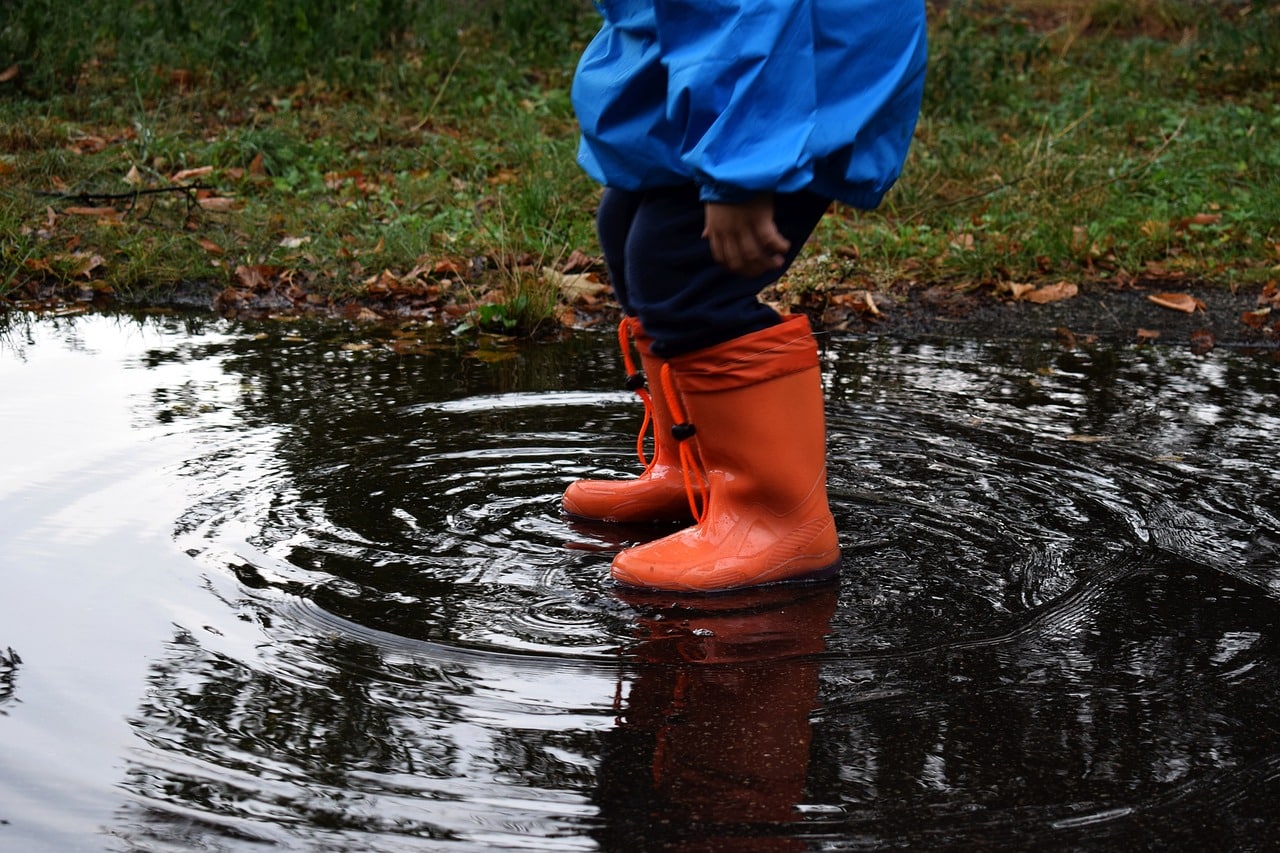
You don’t have to be Barra Best to know that July was wetter than a haddock’s bathing costume, as Edmund Blackadder Esquire would have retorted.
It was absolutely pelting it down and, while we are enjoying a few days of summer-esque respite, August did not start in the best possible fashion either.
Much of a muchness, they said.
And now the good folk at Armagh Observatory have confirmed the vital statistics for July.
While the big bright orangey thing in the sky was sadly missing and one step away from being pictured on the side of a milk carton, the same could not be said of the rain.
Indeed, it has just been confirmed that July – 31 days of dull and damp which brought migraine-inducing monotony – broken only by bouts of puddle-stomping, or worse, watching Peppa Pig and her little brother George puddle stomp – was something of a record-breaker.
For it was the wettest July recorded in Armagh in 87 years.
For the statisticians and those who are less inclined to do the maths that was 1936 – a full four years before Winston Churchill would deliver his rousing ‘we shall fight on the beaches’ speech to the House of Commons.
Alas, fast forward to 2023, and the only thing we have been fighting on the beaches is blue-green algae.
There were endless days spent trying to keep children entertained as we persistently told them, ‘not today’, ‘just because’ or ‘ask your mother’, when quizzed on when or why we can’t all pack up the car and head to Bettystown or Portrush.
It was “much wetter than average and cooler than June”, declares the Observatory. And it was also “duller than average and had an exceptionally low mean atmospheric pressure for July”.
That, translated, means a washout.
Not since Bobby Ewing stepped out of his shower in Dallas a full season after being killed off has so much water fallen needlessly, leaving the public demanding why? The older among you will know what that’s all about!
But, for now, for the boffins and the non-believers among us, here’s the full detailed analysis of a month best forgotten as we say a prayer for warmer days ahead…
Read it and weep…
Total precipitation was 138.75 mm (5.46 inches) including three trace values, that is, 138.6 mm if trace values are ignored. This is nearly 90% more than the 183-year long-term (1838–2020) average July precipitation at Armagh (73.4 mm) and slightly more than twice the most recent (1991– 2020) 30-year July average (69.0 mm).
Following an unusually dry July last year (2022), this was the wettest July at Armagh for 87 years, that is, since July 1936 (149.4 mm). If trace values are ignored, this July was the equal-fifth wettest July on record at Armagh in a daily instrumental record extending back 185 years to 1838.
There was measurable precipitation greater than or equal to 0.1 mm on 26 days, and of the remaining five days only two were completely dry.
The six wettest Julys at Armagh are now July 1896 (180.4 mm), July 1936 (149.4 mm), July 1880 (147.9 mm), July 1931 (146.3 mm), and July 2023 and 1895 (both 138.6 mm if trace values are ignored).
The wettest day was the 22nd, with 40.2 mm (1.6 inches) of rainfall, followed by the 14th (15.3 mm) and the 4th (12.5 mm). The 22nd was the fourth-wettest July day on record at Armagh and the wettest July day at Armagh for 68 years, that is, since 3rd July 1955 (43.7 mm).
The five wettest July days at Armagh are now the 8th of July 1896 (53.6 mm), 27th July 1888 (46.4 mm), 3rd July 1955 (43.7 mm), 15th July 2023 (40.2 mm), and 13th July 1908 (38.5 mm).
There was no thunder or lightning this month nor were any rainbows or named storms recorded. It is interesting, however, that a gull was seen chasing a buzzard on the 5th and again on the 7th, and approximately 25 swifts were seen on the morning of the 11th.
The mean temperature this month was 15.4 degrees Celsius (59.7 Fahrenheit). This is approximately 0.5 C warmer than the 225-year long-term (1796–2020) average July temperature at Armagh (14.87 C) and 0.35 C cooler than the most recent (1991–2020) 30-year July average (15.72 C). This was the coolest July at Armagh for three years, that is, since a mean temperature of 14.6 C was recorded in July 2020.
Just as the warmest part of the day usually (but not always) occurs after midday, so too the warmest month of the year usually occurs after June. At Armagh, the warmest or equal warmest month of the year is either July (54% of the time) or August (42% of the time). June is warmer than July only 8% of the time.
This year the combination of a record-breaking warm June together with July cooler than the most recent 30-year average meant that 2023 was one such year, giving a June minus July temperature difference of 2.0 C. This equals the record for such a temperature difference at Armagh, a record that was set 83 years ago in July 1940.
The month’s warmest day was 23.3 C on the 7th, followed by 22.6 C on the 8th and 21.9 C on the 27th. The warmest day (23.3 C) was significantly cooler than the 28.5 C achieved on 13th June 2023. This therefore holds its position as the warmest day of the year so far.
By contrast, the coolest day (lowest maximum air temperature) was 15.5 C on the 14th, followed by 16.4 C on the 21st and 16.8 C on the 2nd.
The warmest night (highest minimum air temperature) was 15.3 C, which was attributed to the 27th although unusually the minimum occurred around the time of observations the previous day. This was followed by 14.4 C and 14.3 C, attributed to the 8th and 31st respectively although these minimum air temperatures also occurred after the time of observations the previous day.
The coolest night (lowest minimum air temperature) was 8.5 C in the small hours of the 25th, followed by 8.9 C on the 13th and 9.4 C on the 3rd. There were no air or ground frosts this month, the lowest grass minimum temperatures being 2.2 C on the 25th followed by 2.3 C on the 13th.
The wet July 2023 was dominated by frequent showers or longer periods of rain accompanied by a variety of troughs and frontal depressions crossing the country. This month the average pressure, which reflects the frequency of high- and low-pressure systems during the month and the effects of a strong or weak jet stream, was unusually low for July, that is, 1008 mbar reduced to mean sea level. This was the lowest average July atmospheric pressure at Armagh for 162 years, that is, since July 1861 (mean pressure 1006 mbar), and the second-lowest mean July pressure at Armagh in a daily series extending back to 1850. The 170-year (1851–2020) long-term average July pressure at Armagh, reduced to mean sea level, is 1015 mbar.
The Observatory’s long-term pressure record is supported by manual observations taken with a Kew pattern barometer. Results from this historic instrument have not been calibrated accurately against the more modern digital instruments in use, but they do enable the long-term manual record to be extended consistently to the present day.
The Observatory also records minute-by-minute changes in atmospheric pressure through its Automatic Weather Station (AWS), with results from different barometers normally agreeing to better than 1 or 2 mbar.This month the observer recorded an exceptionally low atmospheric pressure at the time of observations, 09:00 GMT, on the 15th of July.
At this time, the Kew pattern barometer gave 986.6 mbar reduced to mean sea level, the second-lowest July atmospheric pressure ever recorded at Armagh and the lowest since 985.0 mbar was recorded 144 years ago on 1st July 1879.
The AWS provides further information. It recorded 985.4 mbar at 09:00 GMT, approximately 1.2 mbar below the value calculated from the less accurate Kew pattern instrument. According to the AWS, the lowest atmospheric pressure that day was 984.6 mbar reduced to mean sea level, 0.8 mbar below the 09:00 GMT value, a lowest reading that occurred for approximately half an hour between 10:41 and 11:12 GMT as the exceptionally deep (for July) low-pressure system moved across the country.
Armagh Observatory and Planetarium Page 3
With a total of 123.9 hours of strong sunshine, July 2023 was slightly duller than average, with approximately 91% of the 140-year long-term (1881–2020) July average (135.9 hours) at Armagh and 92% of the most recent (1991–2020) 30-year average (134.8 hours). The sunniest day was the 29th with just 10.0 hours of strong sunshine, followed by the 9th with 9.3 hours and the 8th with 8.9 hours.
These data refer to observations at Armagh Observatory, which has been recording the weather at Armagh since 1795.




